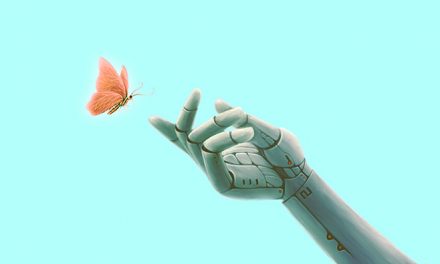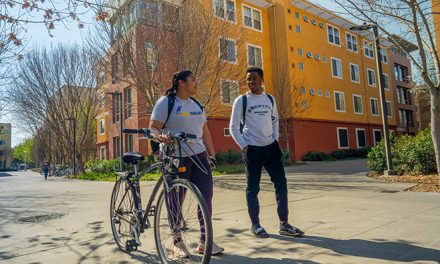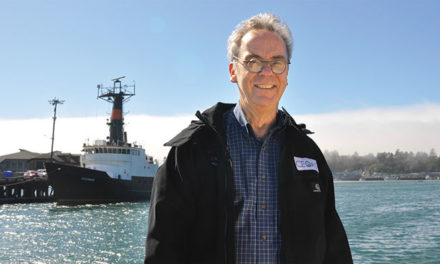Who Is to Blame for California’s Drought?
UC Davis experts answer 6 common questions about the drought.Photo: Steve Payer/California Department of Water Resources
Social media users are playing the blame game when it comes to California’s drought. Read enough comments online and you’ll see many similar responses blaming the state government for its management of water: California should have more water storage. California dumps water into the ocean. Northern California sends too much water to Southern California.
UC Davis experts said those assertions are incorrect.
“The characterization that this is just government malfeasance is wildly inaccurate and unfair, and misses the key points,” said Richard Frank, professor of environmental practice and director of the California Environmental Law and Policy Center at the UC Davis School of Law.
While some criticisms that appear frequently on social media have a basis in reality, others are completely untrue, Frank and other UC Davis experts said.
They provided responses to common drought questions.
Why don’t we just build more dams?
Shouldn’t the state have seen the current drought coming and planned with more storage? Of course, more storage could help, but all the obvious places to build dams were turned into reservoirs years ago, Frank said. The state has more than 1,500 reservoirs, and each remaining additional option is more expensive and less effective than the last, he said.
Jay Lund, co-director for the Center for Watershed Sciences and a distinguished professor of civil and environmental engineering, agreed.
“You can get some more water from building more reservoirs, but you don’t get much and it’s very expensive,” Lund said.
Besides, none of that matters when the storage we do have is running dry (Lake Oroville, the state’s second-largest reservoir, last month deactivated its hydroelectric power plant because of the low water levels for the first time ever), so we should work harder to conserve, Frank said.
“There’s not enough water to fill the existing water infrastructure,” he said. “It’s not just a matter of readjusting expectations among water users — we have to redouble our efforts to conserve and use water more efficiently.”
He pointed to more efficient farm irrigation and drought-resistant urban landscaping as two possible ways to save more.
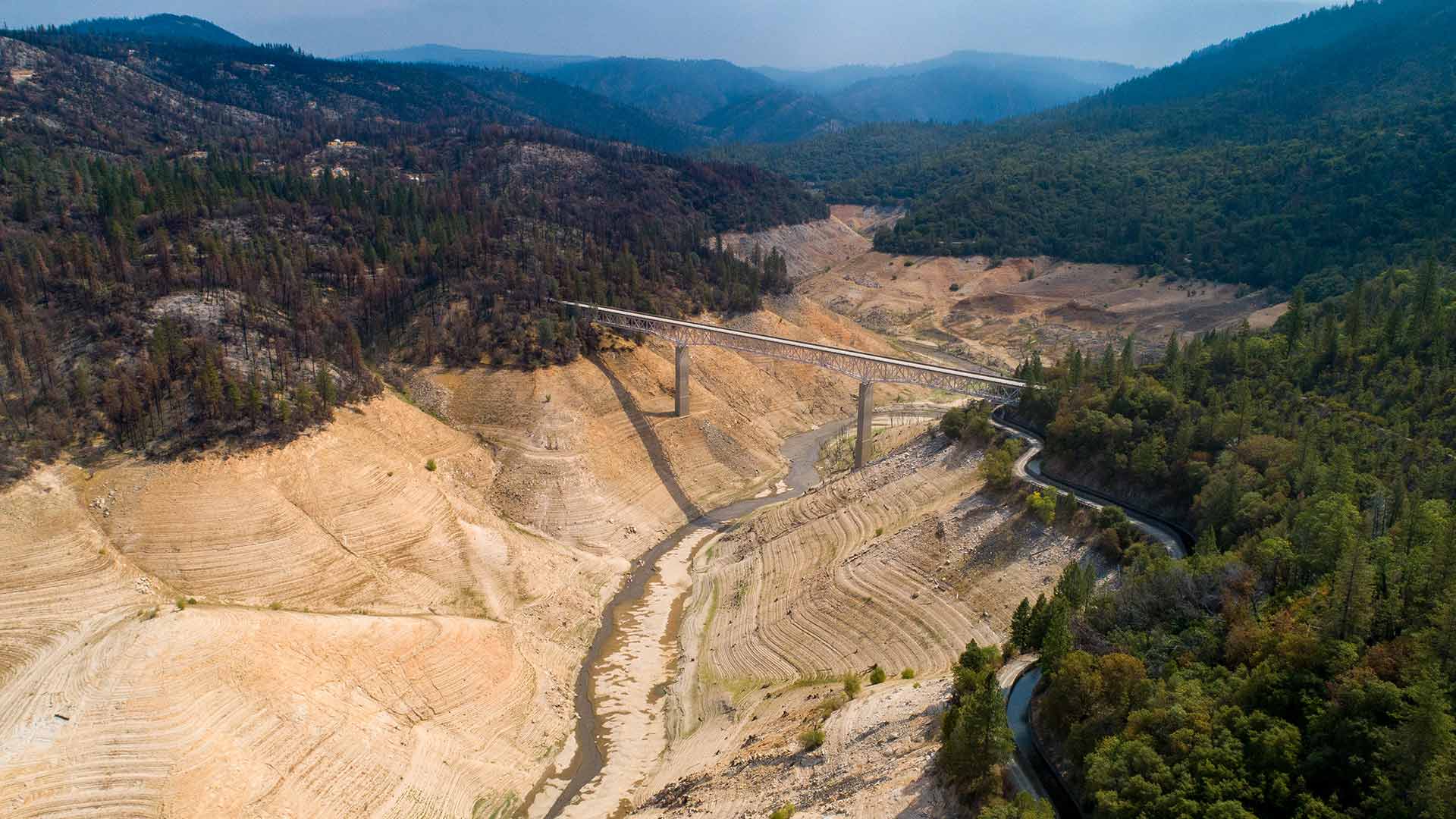
Lake Oroville was reduced to a mere trickle by drought in July 2021.
Kelly M. Grow/California Department of Water Resources
Are we dumping water into the ocean?
Then-president Donald Trump made headlines in October when he said the state was wasting countless gallons of water by dumping it into the Pacific Ocean “to take care of certain little tiny fish.”
The state does release water into the Sacramento-San Joaquin Delta, an estuary where salt water from the sea mixes with fresh water from Sierra snowpack runoff. Water from the delta is used for irrigation and drinking water, and if too little freshwater is present, then seawater would fill the gaps.
“If you stopped allowing some fresh water to migrate, what you would have is salt water,” Frank said. “The water that is diverted would be salt water, and it would be unfit to drink and unfit to irrigate crops with.”
Water released into the delta also helps wildlife like endangered salmon, steelhead and others — but those animals are the first to suffer in a drought.
“This year most of the salmon stocks are going to perish and not be able to spawn,” Frank said.
Karrigan Börk, an associate director at the Center for Watershed Sciences and an acting professor at the School of Law, said droughts can do quick and lasting damage to wildlife populations.
“You can fallow a field for a year, but if fish are unsuccessful for a year, you can lose those populations pretty quickly,” he said.
Lund said fish are likely suffering more than farmers and ranchers, who tend to have other options.
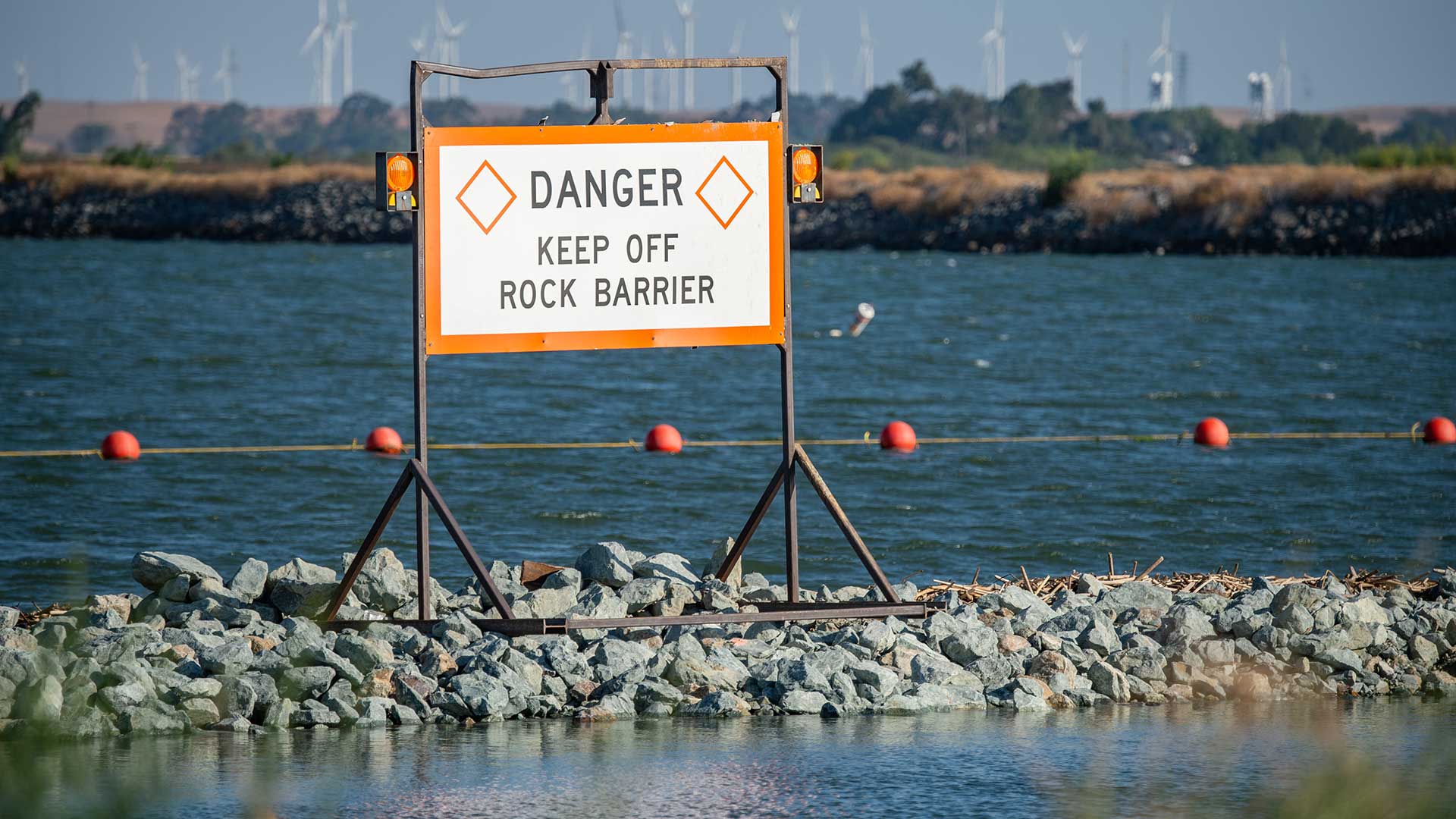
The completed temporary emergency drought barrier for the West False River in the Sacramento-San Joaquin Delta in Contra Costa County, July 2021. The 750-foot-wide rock barrier will help deter the tidal push of saltwater from San Francisco Bay into the central Delta.
Jonathan Wong/California Department of Water Resources
How can agriculture survive the drought?
California’s farmers and ranchers sold their products for more than $50 billion in 2019, but all that output comes at a high cost to the state’s water supply — 80 percent of all water use goes to ag, according to the state.
Lund said farmers and ranchers should reduce their irrigated footprint, swapping out less profitable crops like corn, cotton and wheat for more valuable ones like grapes or almonds.
“It’s going to be smaller in terms of acres, but it could easily be larger in terms of gross profits,” he said. “We’re still seeing a shift from low value crops to high value crops.”
A water marketplace could also help alleviate some of the tension between agricultural and urban water uses in the state, Börk said. Such a system would allow cities running low on water to “buy” water from farmers by paying them to leave fields fallow.
“That could go a long way to mitigating problems in drought periods,” he said.
One way or another, the agriculture industry will need to cut its water use, Frank said.
“I think what the [state] water board and most government regulators are saying is everybody is going to have to bear a share of the pain and cutbacks,” he said. “For those farmers and ranchers who think they have a right to the same level of water they used 20, 40, 50 years ago, they’re whistling past the graveyard.”
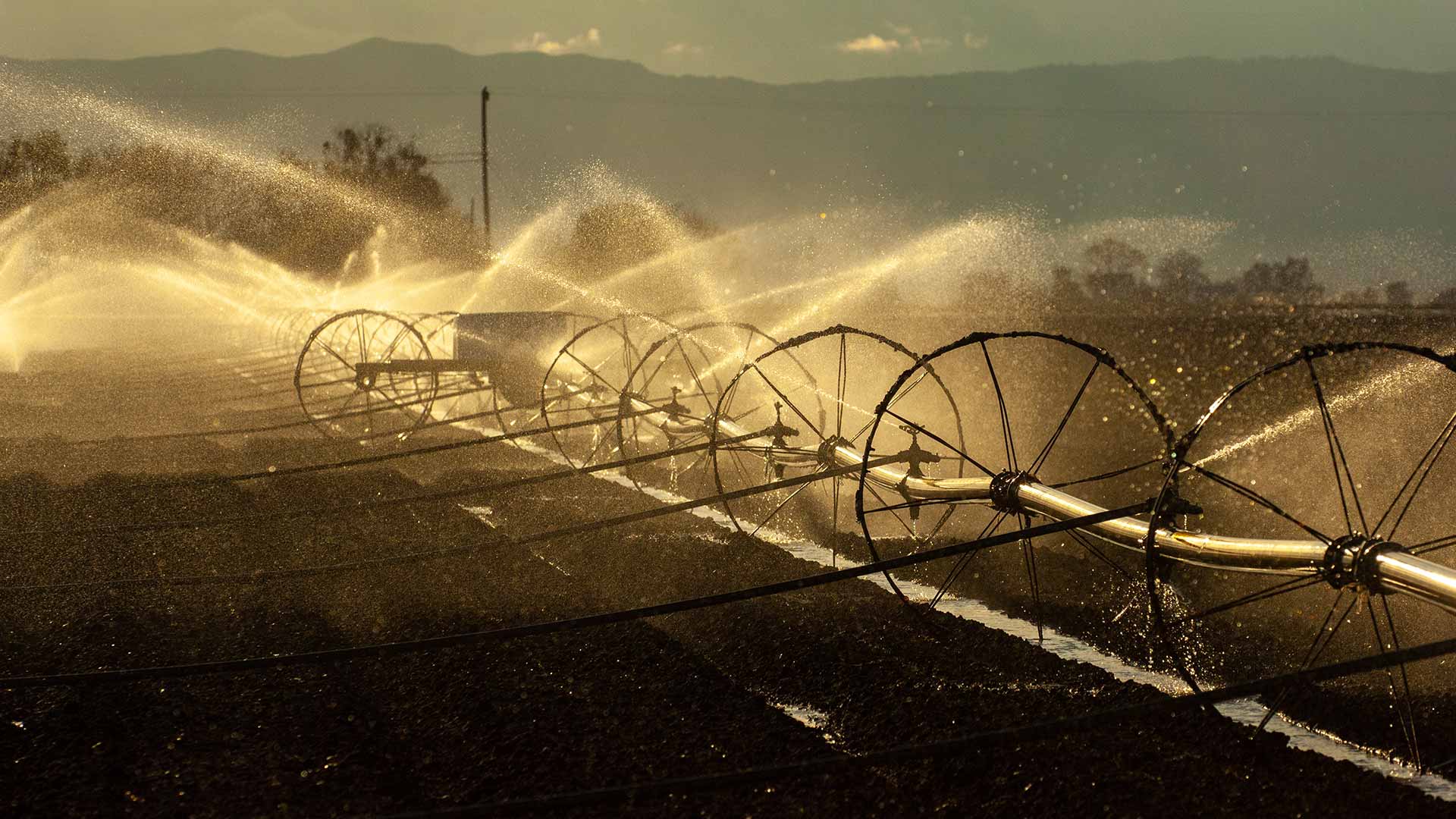
A wheel-line irrigation system running on an agricultural field in California.
Steve Payer/California Department of Water Resources
Is it Southern California’s fault?
In the blame game, Southern California — and large cities in general — are popular targets.
But again, the experts urged a look at the bigger picture.
“You’ve got to look at all the sectors in California,” Frank said. “Domestic and urban use is considered the highest and best use of water [according to the law]. Are you going to tell cities they can’t provide water for their residents for cooking, cleaning and bathing? I don’t think so.”
Börk said the state could do a better job of setting expectations during good years, so people know where to make cuts once droughts hit.
Would desalination plants solve the drought?
Living in a coastal state beleaguered by drought might feel like “water, water everywhere, and not a drop to drink.” So why don’t we use existing technology to remove the salt from the Pacific Ocean’s water? Some in Southern California are doing just that, seeking a desalination plant in Huntington Beach, just 60 miles from the country’s largest facility.
That plant, which opened in Carlsbad in 2015, provides 10% of San Diego County’s drinking water.
“Engineering-wise it’s quite possible, but it’s also very costly,” Lund said. “That would essentially more than double most water bills in urban areas. … There might be some potential there, but it’s never going to be a big contributor, I think.”
He added that desalinated water would never be used for agriculture, because it would cost more than the price anyone could likely get for their crops.
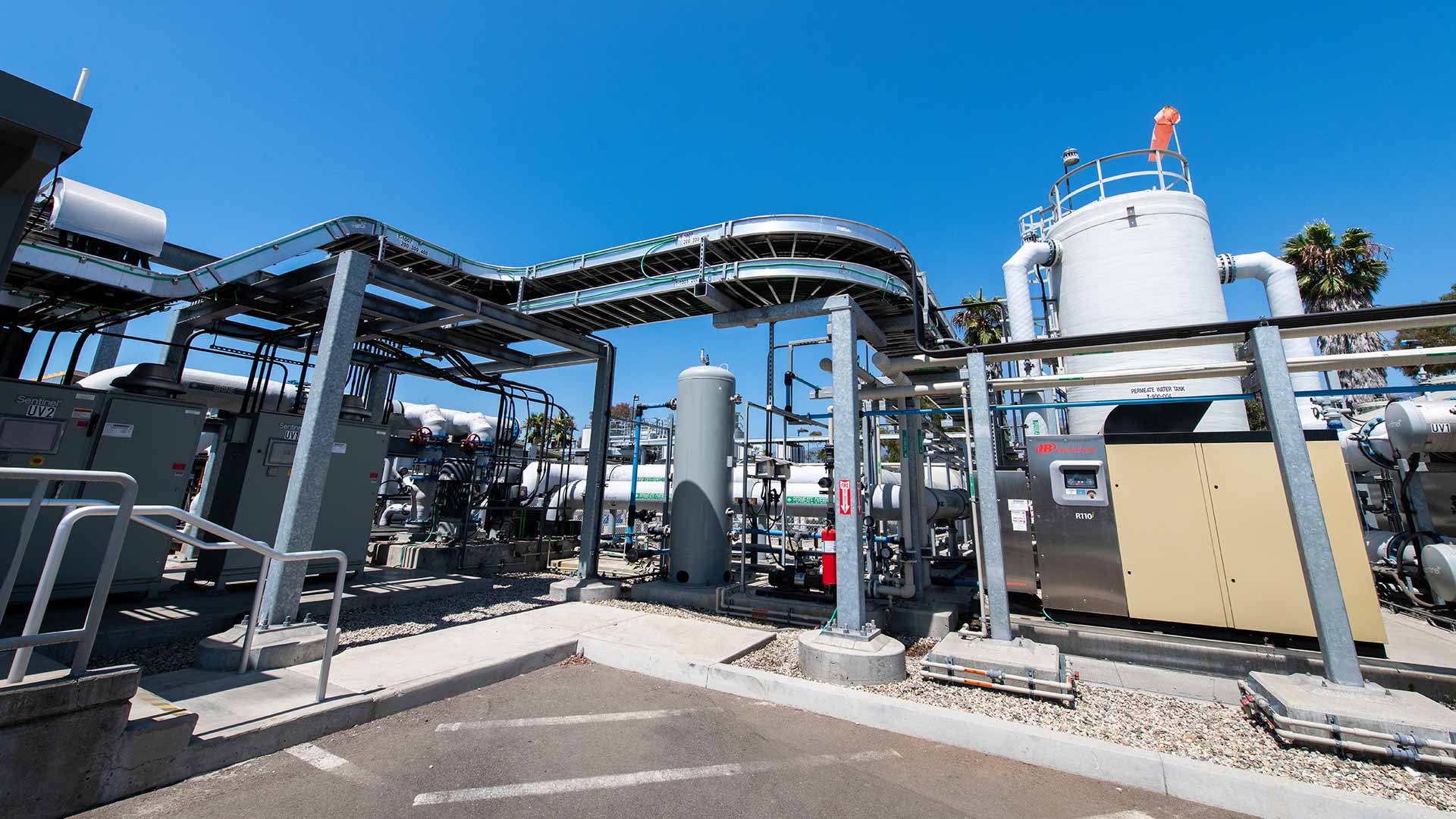
Charles E. Meyer Desalination Plant in Santa Barbara plays a key role in improving water reliability and resiliency for the city during drought years.
Florence Low/California Department of Water Resources
Will we survive the drought?
Even as worsening droughts continue to threaten the state, California’s economy and people will be just fine, the experts said. Lund wrote in a 2016 California WaterBlog that this state is one of the most prosperous Mediterranean climates in the world. (Australia’s gross domestic product per employed person is higher, but California produces more food.) Yet our native ecosystems haven’t suffered as much as those in other areas.
“I like to tell people we do a terrible job managing water, but if you grade on a curve we do pretty well,” he said, adding that the main drivers of the economy — cities — are the parts of California best prepared to deal with droughts. He added that people in most other Mediterranean climates use much less water than Californians, so more lawns will likely have to turn brown here.
Börk said he is optimistic about the state’s water policy.
“California has this long history of consistently, over time changing its water rights system to match the physical reality that’s facing the state,” he said. “California has a remarkable ability to adapt, and I think we can find a way through this together.”

